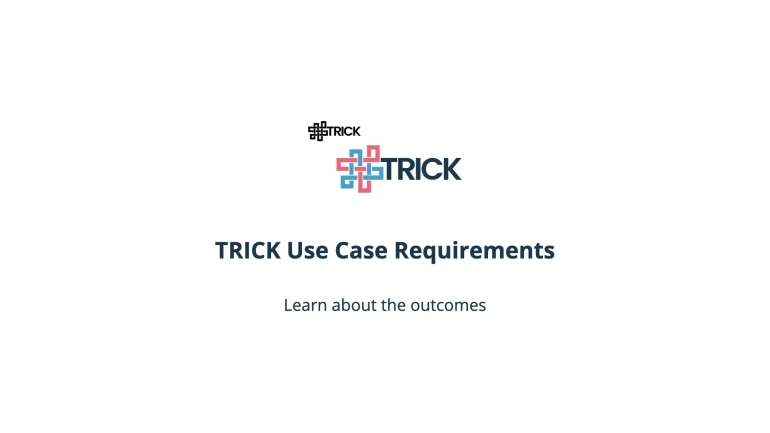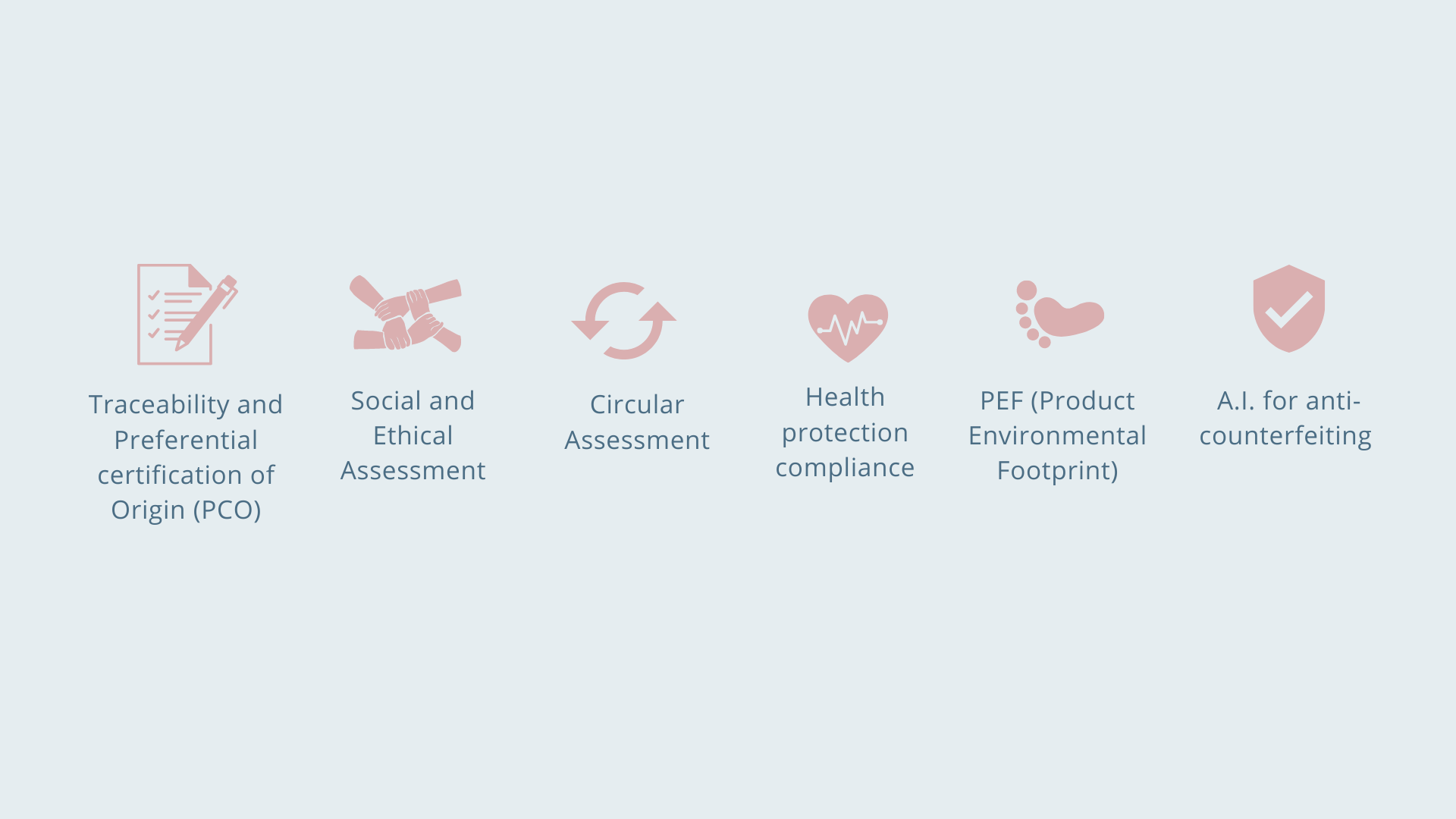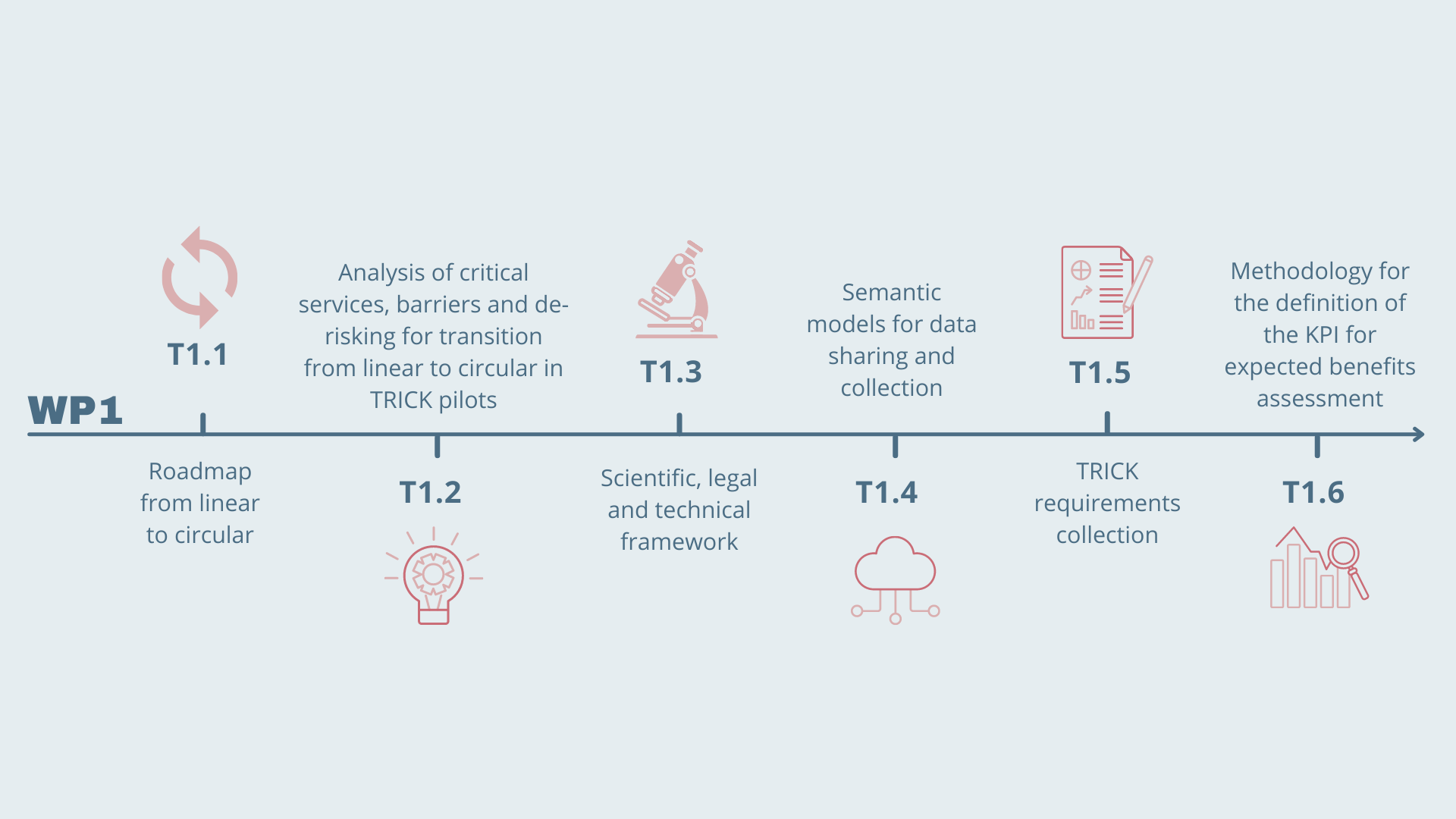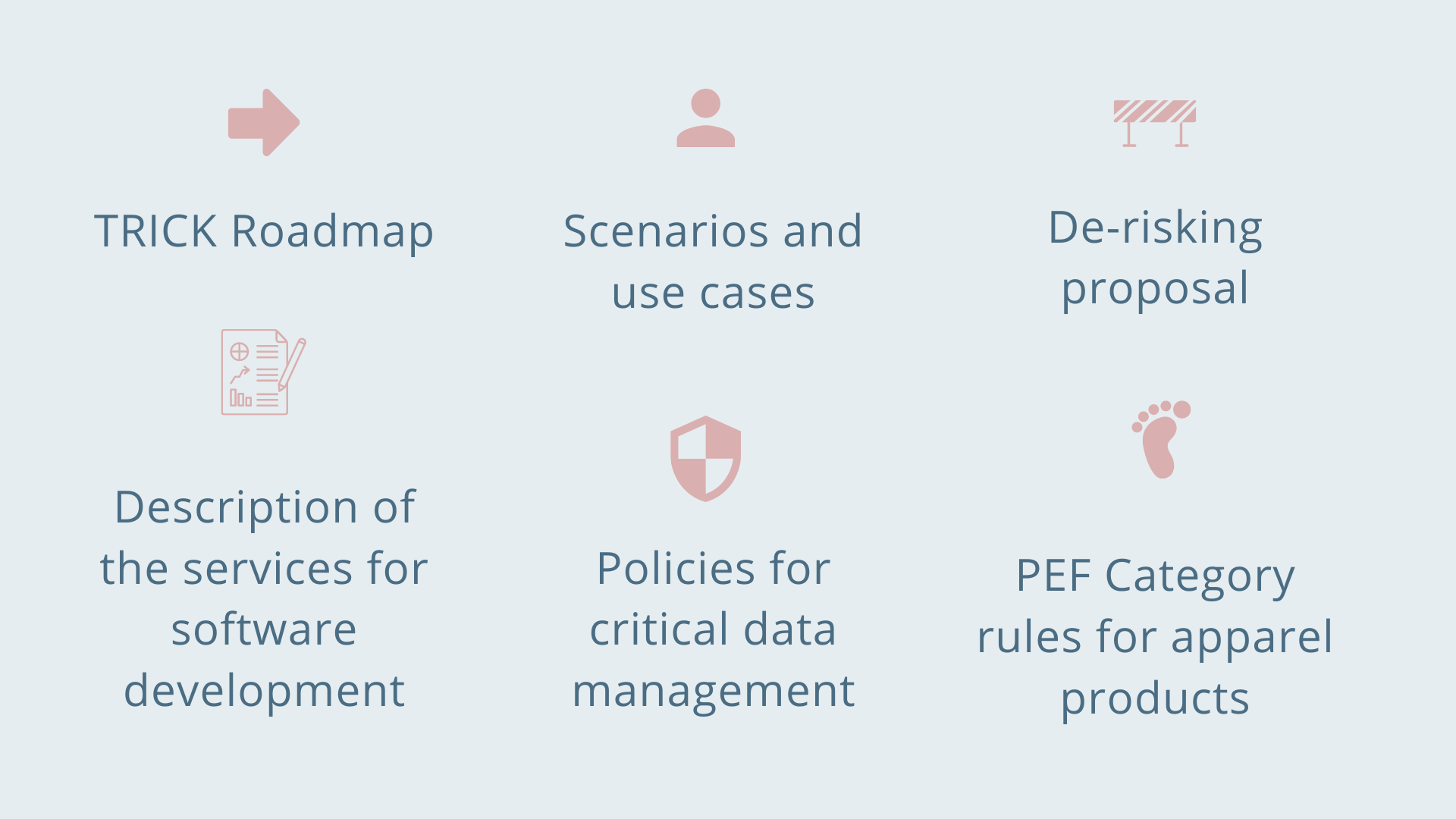Use Case Requirements Definition Towards the Development of the TRICK Platform

The EU Horizon 2020 project TRICK’s aim is to build an industry standard for blockchain-enabled textile supply chain traceability. In order to achieve such an ambitious goal, the initial phase of the project focused on the definition of a framework that sets the basis for the development of the TRICK platform. The corresponding work for delivering these results was endorsed by a deep research on the current situation, existing solutions and user needs of the textile, clothing and food industry in the EU to move towards a circular economy. The recommendations outlined in the work are fundamental for the accurate development of the platform.
The work was composed of six tasks and summarized in five written reports (also referred to as deliverables) that address the different concerns in a synchronized and sequential way in order to reach the common objectives.
Introduction
The preliminary tasks of the project consisted of defining the requirements and basis for developing the TRICK platform from a research and planning perspective. The provided work aimed to understand and deepen the transition from linear to circular manufacturing processes and consumers’ choices by means of:
- Selecting and defining the specific use cases
- Providing a guide for the relevant scientific, legal and technical aspects, including environmental, social and health protection
- Identifying the semantic models for data sharing
- Anchoring the key requirements regarding privacy-by-design, security, and circularity
- Formalizing measurable expected benefits and related KPIs for the specific use cases
A service layer, as part of the TRICK platform, will enable all the stakeholders of the value chain; from the raw material producers to the manufacturers, retailers, consumers and finally back to recycling. Aiming to implement and trace circular economy practices while generating and collecting the needed data regarding practices in environmental, social and health protection domains, six standardized services for sustainability assessment have been described for further development. These are shown in Figure 1 below:

Figure 1: Six standardized services for sustainability assessment (Image Credits: UPC)
The challenges that the development of these tasks went through, go from the fragmentation and complexity of the textile, clothing and food value chain, which are in constant evolution, to the complexity of the TRICK services.
The project’s initial phase was divided into six tasks, as shown in the image below:

Figure 2: Task outline of the initial project phase (Image Credits: UPC)
This work pursued 5 strategic objectives:
- To develop a strategic 10-years plan for the adoption of a circular economy in the textile and clothing (TC) as well as food sector and society at large, based on the TRICK vision.
- To define the link between the needs of the platform users and its technical development, contemplating the complexity and variety of scenarios and stakeholders of the TC and food value chains.
- To provide a comprehensive framework of relevant legal and technical material that addresses the different layers of TRICK: services, support and technical. Approaching companies and SMEs to bridge organizational changes is needed to ensure traceability and transparency in a circular economy.
- To define the reference framework for the platform activities: on one side the definition of the technical and semantic reference for information exchanges along the supply chains of TRICK; on the other side the preliminary study for managing effective and efficient PEF evaluations on the supported products.
- To collect and aggregate requirements from the user profiles, user needs, use cases, data flows and legal aspects.
Main outcomes
Developers of the TRICK platform will leverage the user needs and expectations of TRICK as a software tool. First, the roadmap towards the adoption of circularity by the whole sector was defined. Secondly, design space including the scenarios of use, the user needs, the use cases, the platform visions and a proposal of de-risking to overcome the main barriers that the implementation of the platform might face were proposed.
Finally, from the technical perspective, the work presents a set of requirements necessary for the development phases. It includes: a set of laws and regulations of relevance for the use of TRICK partners while developing the platform, an analysis of authentication and confidentiality aspects per TRICK services, the description of the methodology framework, the data exchange languages within other standards and nomenclatures to be used in the TRICK platform, the TRICK services data flow description, the architecture requirement model based on Systems Modeling Language (SysML) and a requirement list to lay the foundation for the software development of those services.
Conclusions
This work package (WP1) has set the basis for defining the technical specifications needed to design the TRICK platform. The work presents a strong starting point for the platform design and implementation phase. The major outcomes are detailed in the figure below:

Figure 3: Work package Outcomes (Image Credits: UPC)
Currently, the project is in the development phase of the IT architecture, an activity that will last up to 18 months from now on. During the next year, TRICK will exploit its information management system as a first pilot in traditional clothing manufacturing completed by a parallel pilot in technical workwear and replicated in food. The results of the demonstration, to be transferred into a commercial business, will be available from the last months of 2023. The sector and its stakeholders will evolve during these years, therefore, it’s mandatory to continue doing in-depth research of the defined services to keep aligned to the final user needs and follow-up changes in the EU legal framework that could require adaption of the service developments.
Within the outcomes of this work package a set of recommended next steps is presented to be taken into account for the following stages of the project that involve the development of the TRICK platform:
- Encourage the KPI measuring methods developed and the roadmaps for the six services to measure the impact of TRICK on the sustainability of the sector and its improvements, demonstrate and monitor the contributions to the TC and Food pilot demonstrations and support the exploitation of the project results by industrial actors and society at large.
- Foster the use of standard terms across the TC and Food supply chains.
- Promote a new easy model of collaboration, for trading operations, with the Italian Customs Agency, that might be proposed as a reference model in Europe
This article gives an overview of the main outcomes and findings of the initial phase of the TRICK project. The detailed work is available on the corresponding deliverables:
- D1.1 - Roadmap from Linear to Circular & TRICK KPIs and Expected Benefits
- D1.2 - Critical services, barriers, de-risking for the transition from linear to circular
- D1.3 - Scientific, legal, and technical framework
- D1.4 - Harmonized set of semantic standards, ontologies, nomenclatures
- D1.5 - TRICK requirements
In addition, the work offers relevant inputs and highlights the project's contributions to policy issues. The recommendations for policy actions to enable the exploitation of the “Linear to Circular Roadmap” have been summarized in the following policy brief:
- D1.1 Policy Brief - Ways to circular value chains
- D1.2 Policy Brief - How will the TRICK platform support policies to promote circularity in the textile, clothing and food value chains in Europe?
- D1.3 Policy Brief - Establishing legal and technical frameworks for the TRICK platform toward a circular economy
- D1.4 Policy Brief - How can standards facilitate the setting up and management of sustainable SMEs supply chains?